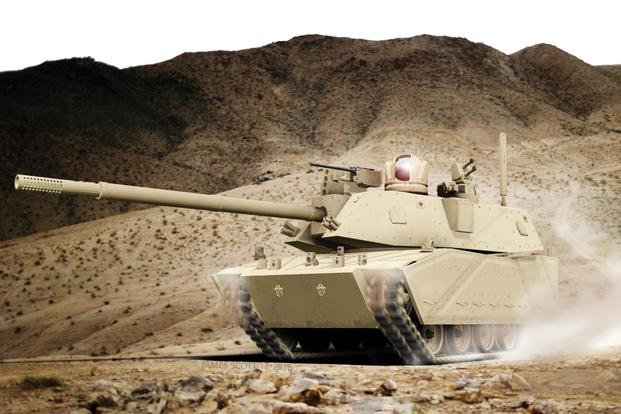The Army will have to ditch several venerable weapons systems to free up money for the long-term deterrence of near-competitor rivals Russia and China, Army Under Secretary Ryan McCarthy said Monday.
"We're going to have to open up the pipes" to finance modernization of the Army to boost readiness in line with former Defense Secretary Jim Mattis' directive to prepare for potential conflict with Russia and China under the National Defense Strategy, McCarthy said at a Center for a New American Security event on the future of the Army.
McCarthy, an Afghanistan veteran and former Army Ranger, wouldn't say which weapons systems would be on the hit list, but said the details would be revealed in the Defense Department's budget request for fiscal 2020 budget, expected to be released next week.
The savings from scrapping old weapons systems over the next five years are expected to be "north of $30 billion," and would be applied to new systems, artificial intelligence and cyber warfare more attuned to emerging threats, he said.
Lt. Gen. Eric Wesley, who joined McCarthy at the event, said what the Army is looking for from improvements in artificial intelligence is not some type of autonomous killing machine but rather the ability to make sense of vast inputs of data to allow the human operator to make decisions for what he described as a "continuum of conflict" with Russia and China.
Other major powers long ago decided that they wanted "no part of close combat with us," and turned their focus to a form of "hybrid warfare" just short of open conflict, which Russia employed in the annexation of Crimea and the ongoing aggression in eastern Ukraine, said Wesley, deputy commanding general for Futures and Concepts at Army Futures Command.
Over the years, the U.S. has come to assume dominance in the air and on the sea. "[But] that won't be true in the future" on a multi-domain battlefield, Wesley said.
In early February, Army Secretary Mark Esper said that the savings realized from scrapping legacy weapons systems would be applied to the service's top six modernization priorities -- long-range precision fires, a next-generation combat vehicle, future vertical lift, IT systems, air-and-missile defense, and soldier lethality.
The new priorities and operational concept would likely require more overseas deployments for troops, with the Army working to boost deterrence by enhancing soldiers' ability to deploy rapidly, McCarthy and Wesley said. McCarthy predicted a "debate on forward presence" in the coming years.
-- Richard Sisk can be reached at Richard.Sisk@Military.com.










